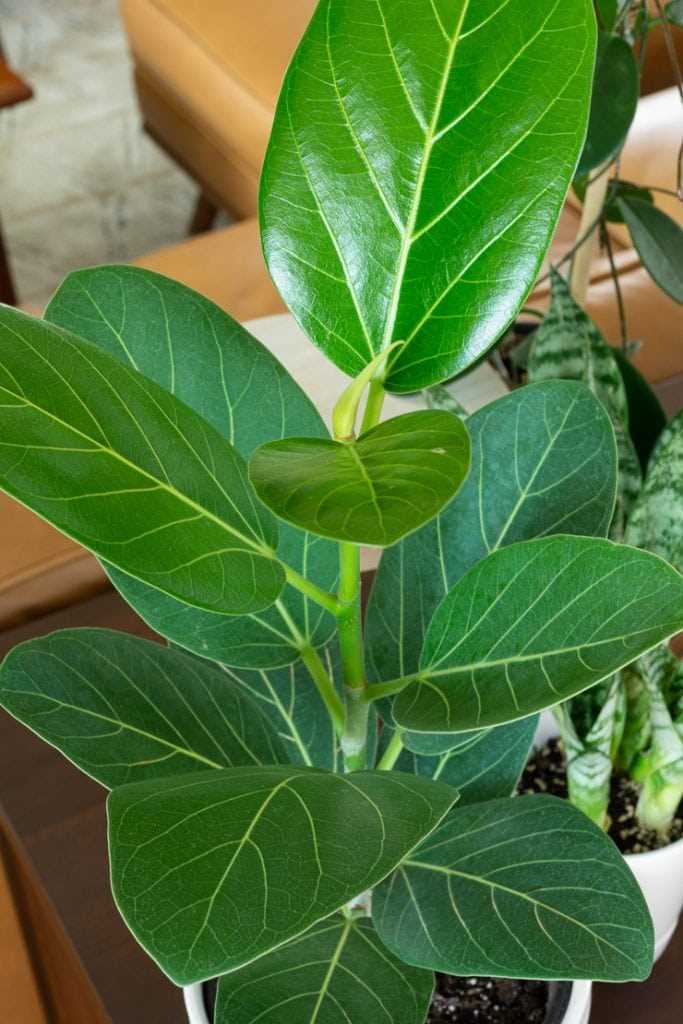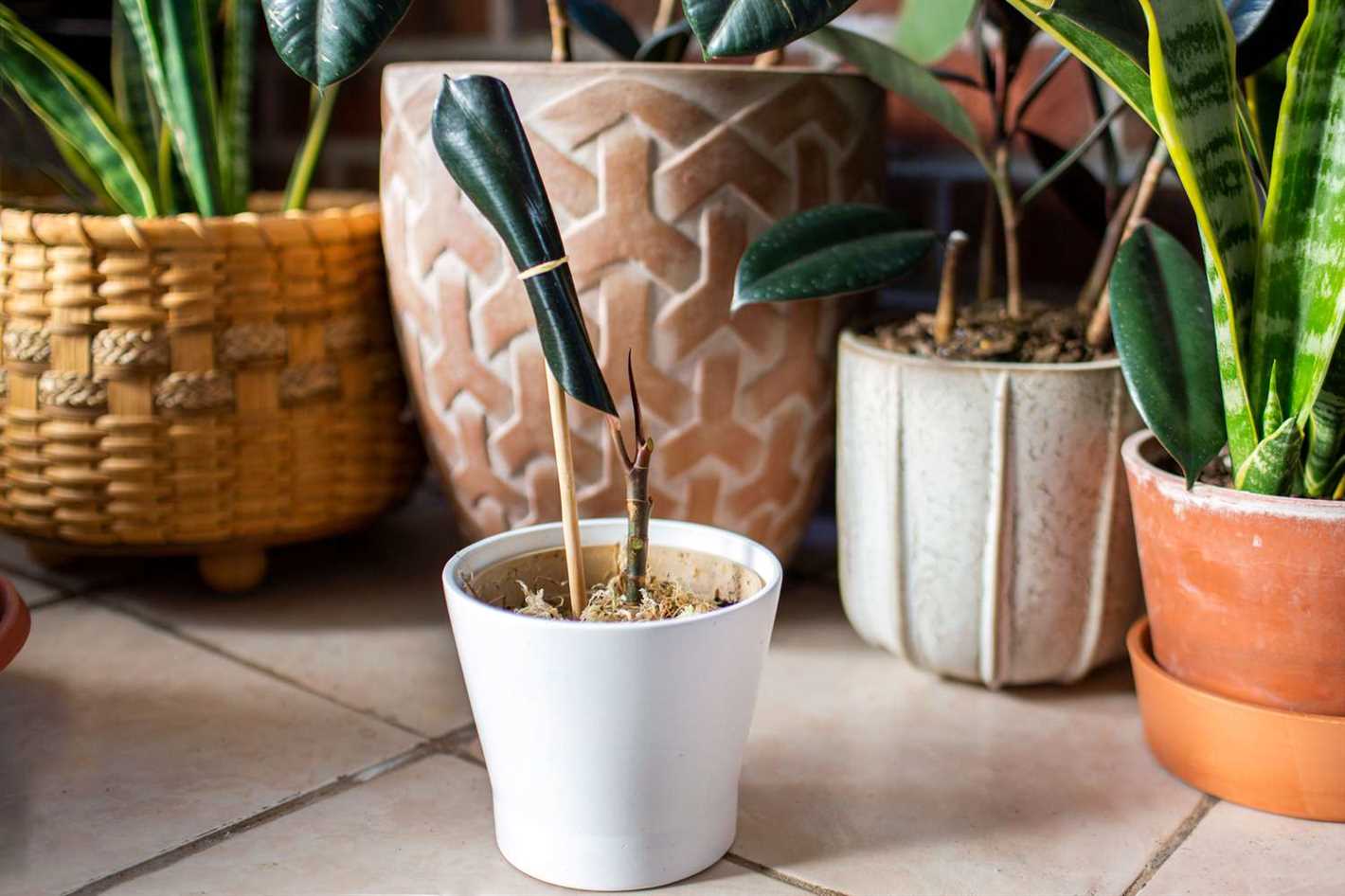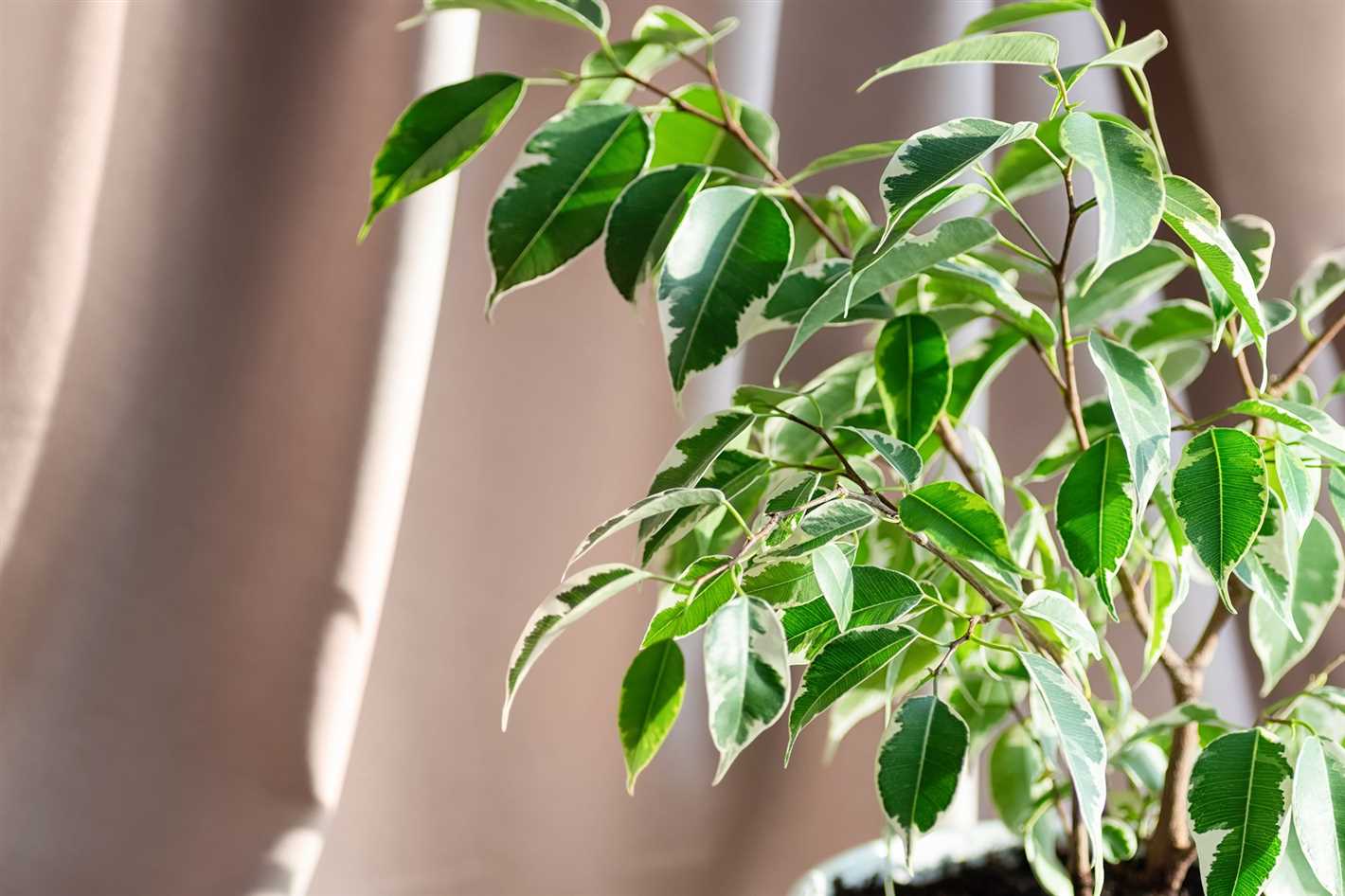- Ficus Propagation at Home
- Propagation Methods
- Cutting Propagation
- Seed Propagation
- Tips and Tricks
- Create Your Own Lush Ficus Tree
- Choosing the Right Ficus Variety
- Collecting Ficus Cuttings
- Preparing the Rooting Medium
- Rooting the Cuttings
- Caring for the Cuttings
- Transplanting the Ficus Tree
- Maintaining Your Ficus Tree
- Choosing the Right Ficus Variety
- 1. Ficus benjamina
- 2. Ficus lyrata
- 3. Ficus elastica
- 4. Ficus microcarpa
- 5. Ficus benghalensis
- Preparing the Propagation Materials
- Propagating Ficus from Stem Cuttings
- What You’ll Need:
- Steps to Propagate Ficus from Stem Cuttings:
- Tips for Success:
- Propagating Ficus from Leaf Cuttings
- Materials You’ll Need:
- Steps:
- Providing the Ideal Growing Conditions for Ficus
- Light
- Temperature
- Humidity
- Watering
- Soil
- Fertilizer
- Caring for Your Propagated Ficus Tree
- 1. Light
- 2. Watering
- 3. Humidity
- 4. Fertilizer
- 5. Pruning
- 6. Pests
- Troubleshooting Common Ficus Propagation Issues
- 1. Root Rot
- 2. Wilting Leaves
- 3. Yellowing Leaves
- 4. Lack of Growth
- 5. Mold or Fungus
- 6. Leggy Growth
- Q&A:
- How can I propagate a ficus tree at home?
- When is the best time to propagate a ficus tree?
- How long does it take for a ficus cutting to root?
- Can I propagate a ficus tree from a leaf cutting?
- What are the signs of successful ficus propagation?
- Video: How to Make a Ficus Bonsai
Have you ever wanted to bring the beauty of a lush, green ficus tree into your own space? With a little bit of knowledge and some patience, you can easily propagate a ficus tree at home. Propagation is the process of growing new plants from cuttings taken from an existing plant. Ficus trees are known for their beautiful, glossy leaves and their ability to thrive in a variety of indoor environments.
Before you start propagating your ficus tree, it’s important to understand the basics. First, choose a healthy and mature ficus tree to take cuttings from. Look for a tree with strong branches and vibrant leaves. Next, gather the necessary tools: a clean pair of gardening shears, a container with water, rooting hormone (optional), and potting soil.
Once you have your tools ready, it’s time to take the cuttings. Select a branch that is about 6-8 inches long and free from disease or pests. Make a clean cut just below a node, which is where the leaf attaches to the branch. Remove any excess leaves, leaving only a few at the top of the cutting.
If you’re using rooting hormone, dip the cut end of the branch into the hormone before placing it in the container with water. This hormone stimulates root growth and increases the chances of success when propagating your ficus tree. If you don’t have rooting hormone, you can still propagate the tree, but it may take longer for roots to develop.
After you’ve placed the cuttings in water, find a bright and warm spot in your home for them to grow. Make sure the container is kept out of direct sunlight to prevent the cuttings from drying out. Change the water every few days to keep it fresh and prevent the growth of bacteria.
Once the cuttings have developed roots, you can transfer them to a pot with potting soil. Choose a pot that is slightly larger than the root ball and fill it with a well-draining soil mix. Plant the cutting in the pot, making sure the soil is firmly packed around the roots. Water the newly potted cutting thoroughly and place it in a spot with bright, indirect sunlight.
With proper care and attention, your propagated ficus tree will soon start to grow and flourish. Remember to water your tree regularly, but be careful not to overwater as this can lead to root rot. Prune your tree periodically to encourage bushier growth and remove any dead or yellowing leaves. Before you know it, you’ll have a beautiful, lush ficus tree that adds a touch of nature to your own space!
Ficus Propagation at Home
Propagating ficus at home is an exciting and rewarding experience that allows you to create lush greenery in your own space. With a bit of patience and the right techniques, you can easily grow a beautiful ficus tree from cuttings or seeds.
Propagation Methods
There are several methods you can use to propagate ficus at home:
- Cutting Propagation: This is the most common method used for propagating ficus. It involves taking a cutting from the mother plant and encouraging it to form roots. The cutting can be taken from the stem or tip of the plant.
- Seed Propagation: If you have access to ficus seeds, you can also propagate the plant from seeds. This method requires more time and patience, as the seeds need to be properly germinated and cared for.
Cutting Propagation
To propagate ficus using cuttings, follow these steps:
- Choose a healthy branch or stem with at least two nodes.
- Make a clean cut just below a node using a sharp, sterilized knife or pruning shears.
- Remove any leaves from the lower portion of the cutting.
- Dip the cut end of the cutting in rooting hormone powder to encourage root growth.
- Plant the cutting in a well-draining potting mix and water thoroughly.
- Place the cutting in a warm, humid location with bright, indirect light.
- Keep the soil consistently moist and mist the leaves regularly to maintain humidity.
- Within a few weeks, roots should start to form, and you can transplant the cutting into a larger pot.
Seed Propagation
If you prefer to propagate ficus from seeds, here’s what you need to do:
- Collect fresh ficus seeds from a mature tree.
- Clean the seeds and soak them in warm water overnight.
- Fill a seed tray or small pots with a well-draining potting mix.
- Plant the seeds about 1 inch deep in the soil and cover with a thin layer of soil.
- Place the tray or pots in a warm location with indirect light.
- Keep the soil consistently moist but not waterlogged.
- Germination may take several weeks or even months, so be patient.
- Once the seedlings have developed a few leaves, they can be transplanted into larger pots.
Tips and Tricks
- Choose a healthy and mature ficus plant for propagation to increase your chances of success.
- Provide the right conditions for your ficus, including proper light, temperature, and humidity.
- Be patient and don’t overwater your cuttings or seedlings, as this can cause root rot.
- Monitor your plants closely for pests and diseases, and take necessary action if needed.
- Consider using a rooting hormone to improve the chances of successful root formation.
By following these propagation methods and tips, you can enjoy the process of growing your own ficus tree and add a touch of green to your home or office space.
Create Your Own Lush Ficus Tree
If you’ve always admired the lush foliage of a ficus tree, why not try propagating one in your own home? With a few simple steps, you can create your own beautiful ficus tree that will bring life and greenery to your space.
Choosing the Right Ficus Variety
There are many different varieties of ficus trees to choose from, so it’s important to select one that is suitable for your indoor space. Some popular ficus varieties include the Ficus lyrata (also known as the fiddle-leaf fig), Ficus elastica (rubber tree), and Ficus microcarpa (Indian laurel fig).
Collecting Ficus Cuttings
The first step in propagating a ficus tree is to collect cuttings from an existing tree. Look for healthy branches with plenty of leaves. Using a sharp, clean pair of pruning shears, cut a 6-8 inch section just below a leaf node. Remove any lower leaves so that there are only a few remaining at the top.
Preparing the Rooting Medium
Next, prepare a rooting medium for your ficus cuttings. A mixture of equal parts perlite and peat moss works well. Fill a small pot or container with the rooting medium and moisten it with water until it is evenly damp.
Rooting the Cuttings

Dip the cut end of each ficus cutting into rooting hormone powder, tapping off any excess. Make a small hole in the rooting medium and insert the cutting, gently firming the soil around it. Repeat this process for each cutting, spacing them evenly in the container.
Caring for the Cuttings
Place the container in a warm, brightly lit area, but away from direct sunlight. Keep the soil consistently moist, but not waterlogged. Mist the leaves of the cuttings regularly to increase humidity. Within a few weeks, you should start to see new growth and roots forming.
Transplanting the Ficus Tree
Once the roots have developed and the ficus cuttings have grown to a suitable size, you can transplant them into individual pots. Fill each pot with a well-draining potting mix and carefully transfer the cuttings, ensuring that the roots are covered and the plant is secure. Water the new ficus tree thoroughly and place it in a location with bright, indirect light.
Maintaining Your Ficus Tree
To keep your ficus tree growing and thriving, make sure it receives adequate light, water, and humidity. Ficus trees prefer bright, indirect light and should be watered when the top inch of soil feels dry. Mist the leaves regularly to maintain humidity, and dust them off periodically to keep them clean and healthy.
With a little patience and care, you can create your own lush ficus tree right in your own space. Enjoy the beauty and greenery that this stunning plant brings to your home!
Choosing the Right Ficus Variety
When it comes to propagating a ficus tree at home, choosing the right variety is essential. There are several popular ficus varieties to consider, each with its unique characteristics and requirements.
1. Ficus benjamina
Ficus benjamina, also known as the weeping fig, is one of the most common ficus varieties. It features glossy leaves and a graceful, drooping habit. This variety is versatile and can be grown as a houseplant or a tree in outdoor gardens.
As a houseplant, Ficus benjamina requires bright, indirect light and regular watering. It is known to be relatively low-maintenance and can tolerate a variety of indoor conditions.
2. Ficus lyrata
Ficus lyrata, commonly known as the fiddle-leaf fig, is a trendy choice for indoor gardening. It has large, leathery leaves that resemble a fiddle or violin. This variety is prized for its bold and dramatic appearance.
To thrive, Ficus lyrata requires bright, filtered light and consistent moisture. It prefers well-draining soil and is sensitive to overwatering. This variety may require more care and attention compared to other ficus varieties.
3. Ficus elastica
Ficus elastica, also known as the rubber tree, is a popular choice for indoor plants. It features glossy, leathery leaves and a robust growth habit. This variety is known for its ability to purify indoor air and is considered a natural air purifier.
Ficus elastica thrives in bright, indirect light and requires moderate watering. It is relatively easy to care for and can tolerate a range of indoor conditions. However, it is important to avoid overwatering, as it can lead to root rot.
4. Ficus microcarpa
Ficus microcarpa, also known as the Chinese banyan or ginseng ficus, is a popular bonsai variety. It features small, dark-green leaves and a thick, gnarled trunk. This variety is cherished for its unique and artistic appearance.
As a bonsai, Ficus microcarpa requires bright, indirect light and regular watering. It is necessary to prune and shape the tree regularly to maintain its bonsai form. This variety may require more expertise and attention compared to other ficus varieties.
5. Ficus benghalensis
Ficus benghalensis, also known as the banyan tree or Indian fig tree, is a majestic ficus variety. It is a tropical tree with a sprawling growth habit and aerial roots. This variety is often grown in large outdoor spaces or as a statement indoor plant.
To thrive, Ficus benghalensis requires bright, direct sunlight and regular watering. It prefers warm and humid conditions and may not be suitable for all indoor environments. This variety requires ample space to accommodate its extensive root system and growth habit.
Before choosing a ficus variety, consider your space, lighting conditions, and personal preferences. Each variety has specific care requirements, so it’s essential to select one that aligns with your capabilities and the environment you can provide.
Preparing the Propagation Materials
Before you start propagating your Ficus plant, you need to gather the necessary materials. Here is a list of what you will need:
- Sharp scissors or pruning shears: You will use these tools to take cuttings from the parent plant.
- Clean and sharp knife: This will be used to make clean cuts on the stems.
- Rooting hormone: This substance will promote root growth in the new cuttings.
- Potting mix: You will need a well-draining potting mix to plant the ficus cuttings.
- Pots or containers: Choose small pots or containers with drainage holes to hold the cuttings.
- Clear plastic bags or plastic wrap: These will create a humid environment for the cuttings to root.
- Watering can or spray bottle: You will need to water the cuttings regularly to keep the soil moist.
- Labels or markers: It’s helpful to label each pot with the name and date of the cutting.
Once you have gathered all the materials, you are ready to proceed with the propagation process. Make sure to sterilize the tools before use to prevent the spread of diseases.
Propagating Ficus from Stem Cuttings
Propagating a Ficus tree from stem cuttings is a popular method to create new plants and expand your collection. This process involves taking a cutting from a mature Ficus plant and encouraging it to grow roots, eventually becoming a new plant. It’s a simple and cost-effective way to propagate your favorite Ficus varieties.
What You’ll Need:
- Mature Ficus plant
- Clean, sharp knife or pruning shears
- Rooting hormone (optional)
- Growing medium (such as vermiculite or perlite)
- Pots or trays
- Water spray bottle
Steps to Propagate Ficus from Stem Cuttings:
- Select a Healthy Stem: Choose a healthy stem on the Ficus plant that is at least 6 inches long. Look for a stem with multiple leaves and no signs of disease or pest damage.
- Prepare the Cutting: Use a clean, sharp knife or pruning shears to cut the stem just below a node (the point where a leaf attaches to the stem). Remove any excess leaves on the lower half of the cutting.
- Apply Rooting Hormone (optional): To enhance root development, you can dip the cut end of the stem into rooting hormone powder or gel.
- Plant the Cutting: Fill a pot or tray with a suitable growing medium, such as vermiculite or perlite. Make a hole in the growing medium and carefully insert the cutting, ensuring that at least half of the stem is buried.
- Provide Proper Care: Place the pot or tray in a warm, bright location, away from direct sunlight. Mist the cutting with water using a spray bottle to maintain moisture levels. Keep the soil moist but not overly wet, as excessive moisture can cause stem rot.
- Monitor Root Development: After a few weeks, check for root development by gently tugging the cutting. If you feel resistance, it means roots have started to form.
- Transplant the Cutting: Once the cutting has developed a good root system, it can be carefully transplanted into a larger pot with well-draining soil.
- Continued Care: Provide adequate water, light, and humidity for the newly propagated Ficus plant. It will take some time for the plant to establish and start growing.
Tips for Success:
- Choose a healthy Ficus plant with vigorous growth for the best chances of success.
- Use sharp and clean tools to prevent any potential infections or diseases.
- Consider using rooting hormone to speed up the rooting process.
- Maintain high humidity by covering the cutting with a plastic bag or using a misting system.
- Be patient and allow the cutting enough time to develop roots before transplanting.
By following these steps and providing the proper care, you can successfully propagate Ficus plants from stem cuttings. It’s an exciting and rewarding process that allows you to expand your indoor jungle with beautiful Ficus trees!
Propagating Ficus from Leaf Cuttings
Propagating Ficus from leaf cuttings is a simple and cost-effective way to create new plants. It’s a popular method for ficus plants because they have large, sturdy leaves that take well to propagation. Here is a step-by-step guide on how to propagate ficus from leaf cuttings:
Materials You’ll Need:
- Healthy ficus plant
- Sharp, clean scissors or pruning shears
- Small containers or pots
- Potting soil or a mixture of peat moss and perlite
- Water
- Rooting hormone (optional)
- Plastic bag or clear plastic wrap
Steps:
- Choose a healthy leaf from your ficus plant. Look for a mature leaf that is free from any disease or damage.
- With the scissors or pruning shears, cut the leaf from the plant, making sure to include some of the stem.
- Prepare your containers or pots by filling them with potting soil or a mixture of peat moss and perlite.
- If desired, dip the cut end of the leaf in rooting hormone to promote root growth.
- Make a small hole in the potting soil or mixture and insert the cut end of the leaf into the hole.
- Lightly press down on the soil around the leaf to ensure it stays in place.
- Water the soil thoroughly, making sure it is evenly moist but not soaking wet.
- Cover the container or pot with a plastic bag or clear plastic wrap to create a greenhouse-like environment.
- Place the container in a warm and bright location away from direct sunlight.
- Every few days, check the soil moisture and water if necessary. Avoid overwatering, as this can cause root rot.
- After a few weeks, you should start to see new growth emerging from the leaf cutting.
- Once the new plant has established roots and several new leaves, it can be transferred to a larger pot with regular potting soil.
Propagating ficus from leaf cuttings can be a rewarding and enjoyable experience. With proper care and patience, you can create a lush ficus tree in your own space!
Providing the Ideal Growing Conditions for Ficus
Creating a lush Ficus tree in your space requires providing the ideal growing conditions for the plant. Ficus trees thrive in certain environmental conditions and it’s important to meet these requirements for optimal growth. Here are some factors to consider:
Light
Ficus trees prefer bright and indirect light. They can tolerate low light conditions, but they thrive in areas with bright, filtered light throughout the day. Avoid placing your Ficus tree in direct sunlight, as it can cause leaf burn.
Temperature
Ficus trees prefer temperatures between 60°F (15°C) and 75°F (24°C). They can tolerate slightly lower temperatures but should be kept away from drafty areas or cold windows during the colder months. Avoid sudden temperature changes, as this can cause stress to the plant.
Humidity
Ficus trees thrive in high humidity environments. If the air in your home is dry, you can increase humidity by misting the leaves with water or placing a humidifier nearby. Another option is to place a tray of water near the plant, allowing the water to evaporate and increase the humidity around the tree.
Watering

Proper watering is essential for the health of your Ficus tree. Water your plant thoroughly when the top inch of soil feels dry to the touch. Avoid overwatering, as this can lead to root rot. Allow excess water to drain from the pot to prevent waterlogged soil.
Soil

Use a well-draining soil mixture for your Ficus tree. A mix of peat moss, perlite, and potting soil provides good drainage while retaining enough moisture for the plant’s roots. Avoid using heavy, compacted soils that can suffocate the roots.
Fertilizer

Feed your Ficus tree with a balanced liquid fertilizer every 2-4 weeks during the growing season (spring and summer). Follow the instructions on the fertilizer packaging for proper dosage. Avoid over-fertilizing, as it can lead to salt build-up in the soil.
By providing the ideal growing conditions for your Ficus tree, you can create a lush and healthy indoor plant that will thrive in your space. Remember to monitor the plant’s needs and make adjustments as necessary to ensure its well-being.
Caring for Your Propagated Ficus Tree

Once you have successfully propagated your ficus tree, it is important to provide proper care to ensure its health and growth. Here are some tips on caring for your propagated ficus:
1. Light
Ficus trees thrive in bright, indirect sunlight. Place your propagated ficus tree in a location that receives a good amount of natural light, but avoid direct sunlight as it can scorch the leaves.
2. Watering
Proper watering is essential for the health of your ficus tree. Water your propagated ficus tree when the top inch of the soil feels dry to the touch. Avoid overwatering, as it can lead to root rot. It’s better to underwater than to overwater.
3. Humidity
Ficus trees prefer high humidity levels. You can increase humidity around your propagated ficus tree by misting its leaves with water or placing a humidifier nearby. Alternatively, you can group your ficus tree with other plants to create a microclimate of increased humidity.
4. Fertilizer
Feed your propagated ficus tree with a balanced, water-soluble fertilizer every 2-3 months during the growing season (spring and summer). Follow the instructions on the fertilizer package for the appropriate dosage.
5. Pruning

Regular pruning helps to maintain the shape and size of your propagated ficus tree. Trim any dead or yellowing leaves, as well as any branches that are growing too long or in undesirable directions. Pruning should be done during the dormant season (winter) to avoid excessive sap flow.
6. Pests
Keep an eye out for common ficus tree pests such as spider mites, mealybugs, and scale insects. If you notice any signs of infestation, treat your propagated ficus tree with an appropriate insecticidal soap or oil spray.
By following these care tips, you can ensure that your propagated ficus tree continues to grow and thrive, adding beauty and greenery to your space.
Troubleshooting Common Ficus Propagation Issues
1. Root Rot
Root rot is a common issue that can occur when propagating a ficus tree. It is caused by overwatering or poor drainage, which leads to the roots becoming waterlogged and rotting. To fix this issue, ensure that your propagation medium has good drainage and only water the plant when the top layer of soil is dry. If root rot has already occurred, gently remove the affected roots and replant the cutting in fresh, well-draining soil.
2. Wilting Leaves
Wilting leaves can be a sign of underwatering or excessive sunlight. Ficus trees prefer slightly moist soil, so if the leaves are wilting, check the moisture level in the soil and adjust your watering schedule accordingly. Additionally, too much direct sunlight can cause the leaves to wilt. Move the plant to a location with indirect or filtered sunlight to prevent further wilting.
3. Yellowing Leaves
Yellowing leaves can indicate a variety of issues, including overwatering, nutrient deficiency, or pest infestation. Check the soil moisture and adjust your watering if necessary. If the yellowing is accompanied by browning or spotting, it may be a sign of a nutrient deficiency. Consider fertilizing the plant with a balanced houseplant fertilizer. Pest infestations, such as spider mites or scale insects, can also cause yellowing leaves. Inspect the plant for any signs of pests and treat accordingly.
4. Lack of Growth
If your ficus cutting is not showing any signs of growth, it may be due to a lack of humidity or inadequate light. Ficus trees prefer high humidity, so consider using a humidifier or placing the cutting in a tray filled with water and pebbles to increase humidity levels. Insufficient light can also hinder growth, so make sure the cutting is placed in a location with bright, indirect light.
5. Mold or Fungus
Mold or fungus growth on the propagation medium or leaves can be a sign of excessive moisture or poor ventilation. Remove any mold or fungus and improve airflow around the cutting. Ensure that the propagation medium is not overly moist, as this can promote the growth of mold and fungus. If necessary, replant the cutting in fresh, well-draining soil.
6. Leggy Growth
Leggy growth occurs when a ficus cutting produces long, thin stems with sparse foliage. This is often a result of insufficient light. To promote more compact growth, place the cutting in a location with brighter light. You can also trim back any excessively long stems to encourage bushier growth.
By troubleshooting and addressing these common ficus propagation issues, you can ensure the health and success of your ficus tree. Remember to monitor the plant regularly and make adjustments as needed to create a lush and thriving ficus tree in your own space!
Q&A:
How can I propagate a ficus tree at home?
Propagating a ficus tree at home is relatively easy. You can propagate a ficus tree through stem cuttings or air layering. For stem cuttings, simply snip a healthy branch from the parent tree and place it in water or soil until roots develop. For air layering, wrap a moss-covered branch section with plastic wrap and wait for roots to form. Once the roots are established, you can transfer the cutting to a pot with soil to grow into a new ficus tree.
When is the best time to propagate a ficus tree?
The best time to propagate a ficus tree is during the early spring or summer months. This is when the ficus tree is actively growing and has the highest chance of successful propagation. By choosing the right timing, you can give your new ficus tree the best chance of survival and optimal growth.
How long does it take for a ficus cutting to root?
The time it takes for a ficus cutting to root can vary depending on various factors such as the type of ficus tree, environmental conditions, and propagation method. Generally, it can take anywhere from a few weeks to a couple of months for roots to develop. Regular monitoring and proper care are important during this period to ensure successful rooting.
Can I propagate a ficus tree from a leaf cutting?
No, it is not possible to propagate a ficus tree from a leaf cutting. Ficus trees do not propagate through leaf cuttings but rather through stem cuttings or air layering. Leaf cuttings will not grow into new ficus trees as they do not have the ability to develop into root systems and grow into a complete plant.
What are the signs of successful ficus propagation?
There are several signs to look for to determine if your ficus propagation has been successful. First, check for the presence of new growth, such as new leaves or stems, emerging from the cutting. Additionally, you can gently tug the cutting to see if it has established roots in the soil. If there is resistance or a slight movement, it indicates that the roots have developed and the propagation has been successful.
Video:
How to Make a Ficus Bonsai







